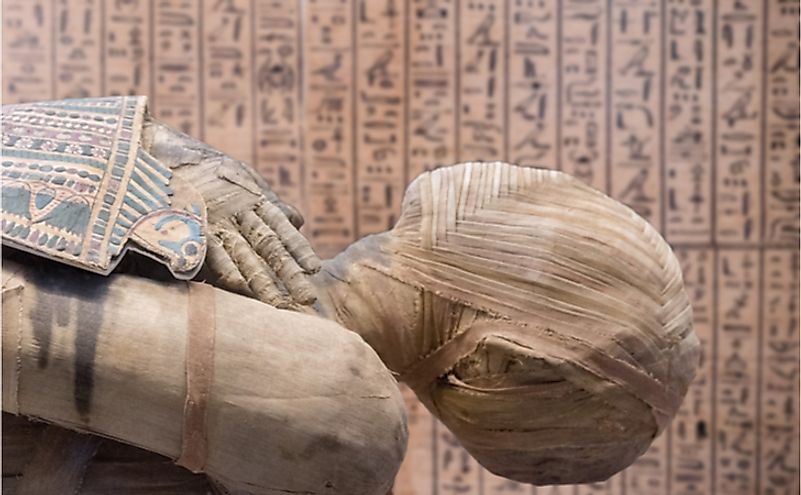Are Mummies Found Only In Egypt?

A mummy is the remains of an animal or human that was preserved after death. Mummification is either accidental or intentional and occurs when a corpse is exposed to chemicals, extremely low humidity, extreme cold, and dry and airtight conditions. Not just Ancient Egypt, many other civilizations practiced mummification. Australian aboriginals, Aztecs, and Europeans also honored their dead by preserving their remains.
Where Are Mummies Found?
Egypt is the mummy capital of the world. It is estimated that there might be about 70 million mummies in the deserts of Egypt, but a few are still intact. The earliest Egyptian mummies dated to 3500 BC. In February 2019, a tomb with 40 mummified corpses was discovered, adding to the more than 100 mummies discovered in less than two years. Mummies have also been found in Europe, Asia, North America, Oceania, and South America. Not all mummies are ancient; some modern people have chosen to be mummified after death. They include Philosopher Jeremy Bentham, Russian political theorist and politician, Vladimir Lenin, and German doctor, Gottfried Knoche.
The Process Of Mummification
Mummification is varied across cultures, some mummified every dead person while others reserved the right for people of status. Exposing a corpse to fire, extreme sun, and freezing temperatures was a simple way of mummifying a body. Mummification can also occur accidentally, for instance, over 100 mummies were preserved in Guanajuato, Mexico by extreme heat and sulfur deposits found at the burial sites. Buddhist monks self-mummified by starving themselves and eating only light food. They drank poisonous sap to induce vomiting, get rid of body fluids, and create an intolerant environment for bacteria when they die. When death was imminent, the monks would be buried alive, and their bodies would mummify. Regardless of the mummification process, the objective was to preserve as much tissue as possible.
Mummification In Egypt
Ancient Egyptian priests were experts in mummification, and the arid climate in the country made it easier to dry a corpse. Mummification was practiced by the wealthy and royal families. The mummification process involved washing the body and removing all internal organs except the heart. Moisture was then removed by staging the body in saltwater before embalming it with resins, cedar oil, myrrh, and cassia, and juniper oil. Mummified remains of Pharaohs were stored in stone coffins before being buried in deep tombs and inside hidden chambers within the pyramids.
Mummies As Medicine
Between the 12th and 17th centuries, thousands of mummies were disentombed, burned, and powdered to meet the demand for “mummy medicine.” Interest in mummies as curative medicine arose from the belief that corpses were embalmed with bitumen; a mineral found in the Dead Sea. However, this was not always the case, as most mummies were embalmed with resins. Egyptians believed that disturbing a tomb was a bad omen that led to death. Most mummies were, therefore, left untouched until archaeologists began excavating them in the early 20th century.
Intrigued by Ancient Egypt? Learn some interesting facts about Ancient Egypt here.











